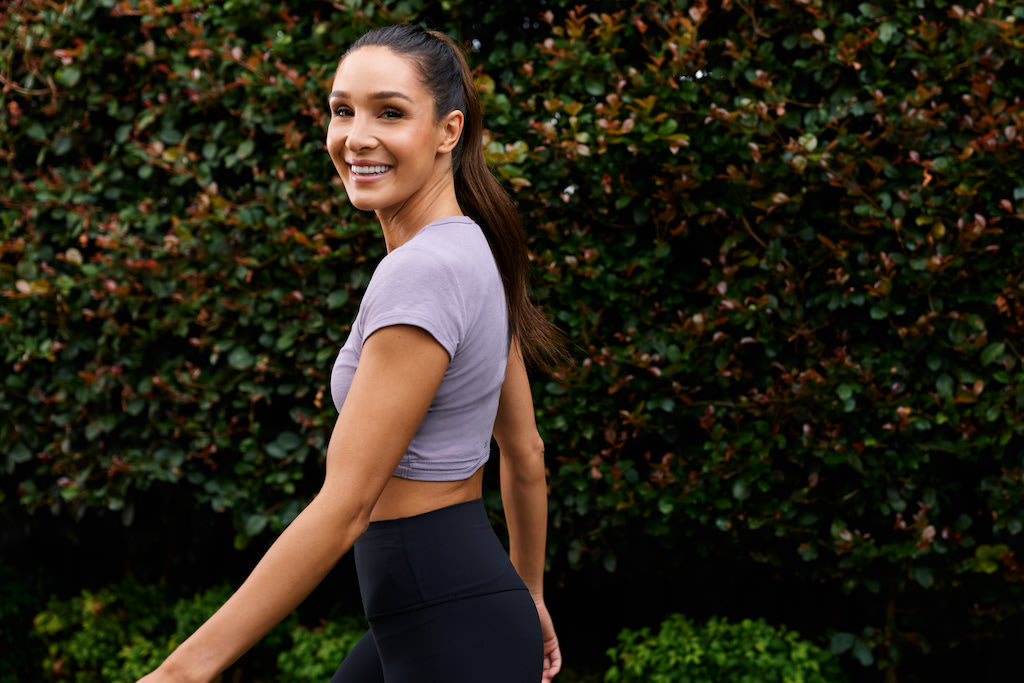LISS Workouts: The “Slow” Cardio That Delivers Results

November 1, 2019 - Updated October 24, 2025

You’ve probably heard all about the benefits of high-intensity interval training (HIIT) — but what about low-intensity cardio?
One of the biggest myths in fitness is that a workout has to be intense to be effective. While higher-intensity sessions definitely have their place, low-intensity training can boost your fitness in a gentler, more sustainable way.
That’s why you’ll find low-intensity cardio built into every Sweat program. It’s easy to do, packed with benefits, and sits comfortably within most people’s limits — making it ideal for beginners, active recovery days, or getting back into movement after some time off.
From walking to cycling (and everything in between), there are so many simple ways to make LISS part of your everyday routine.
What is low-intensity cardio training?
If you hear any of these terms, they all mean the same thing:
Low-intensity cardio training
Low-intensity steady-state
LISS
Whatever you want to call it, it’s when you work out between 57%–63% of your maximum heart rate for a steady and sustained period - typically for 30 minutes or more, according to the American College of Sports Medicine. An easier way to gauge that intensity is to simply make sure you can easily hold a conversation.
Low-intensity cardio training is usually low-impact (such as walking, swimming or cycling) and provides all the cardiovascular benefits of exercise without placing stress on your joints. You can do it as a standalone session, use LISS to warm up and cool down on either side of a workout, or enjoy it as an active recovery option to improve blood flow and circulation to your working muscles.
Why is low-intensity cardio so beneficial?
According to the American Council on Exercise (ACE), low-intensity cardio increases your aerobic capacity, or your body’s ability to use oxygen during exercise. In turn, your body is able to break down carbohydrates and fats for fuel, strengthen your slow-twitch muscles and transport oxygen more effectively to your muscles.
During lower-intensity exercise, your muscles rely on energy from a combination of oxygen, carbohydrates and fats. Over time, ACE says your body becomes more efficient at using these energy sources — which means you’ll be able to physically work for longer periods of time before fatigue sets in.
Low-intensity cardio also helps to strengthen your slow-twitch muscle fibres - the ones responsible for endurance and everyday movements that don’t require explosive power.
According to Mayo Clinic, there are so many great reasons to include cardio training in your routine. From improving your fitness to boosting your mood, high and low-intensity cardio training can make you feel good - inside and out.
By including LISS in your routine, you can look forward to:
Improved fitness, stamina and strength
Reduced risk of health conditions such as obesity and heart disease
A stronger immune system
Better heart health and longevity

Who is low-intensity cardio training best for?
Low-intensity cardio training is suitable and beneficial for almost everyone and any fitness level. It's not just for beginners or recovery days, and many athletes talk about the power of zone 2 cardio all the time. An added benefit? It’s a low-cost, low-barrier way to get your body moving.
If you normally train at a high intensity, you might find balancing your routine with some low-intensity cardio can be beneficial, improve your endurance base and even promote faster recovery.
Low-intensity cardio training options
There are many forms of low-intensity cardio you can try, whether you’re at home, the gym, the local pool or on holiday.
Options that require equipment or facilities:
Zero-equipment options:
Walking or easy hiking trails
Jogging (as long as your heart rate is low)
Ocean swimming
During a low-intensity cardio session, your aim is to train with a consistent intensity for the whole duration of the workout, as opposed to going hard for short intervals as you would with HIIT.
How often should you do low-intensity cardio training?
The Australian government recommends adults include 2.5 to 5 hours of LISS activity such as walking, golfing, swimming or even mowing the lawn in their weekly routine, alongside strength-building sessions and more vigorous activity.
If you work out with the Sweat app, you’ll find our programs typically suggest two to three low-intensity cardio days each week to supplement your strength training. This could be a long walk each day, or if you've got a busy schedule it might mean trying to get your steps up over the course of the whole day in short bursts.
Move well, feel well
Low-intensity cardio training is simple, has many benefits and there are plenty of ways to weave it into your routine without getting bored. Make your sessions fun with a friend, hop on a cardio machine while watching your favourite show, or take it outdoors on a sunny day.

A more empowered you starts with Sweat, and our editorial team is here to bring you the latest fitness tips, trainer recommendations, wellbeing news, nutritional advice, nourishing recipes and free workouts.
* Disclaimer: This blog post is not intended to replace the advice of a medical professional. The above information should not be used to diagnose, treat, or prevent any disease or medical condition. Please consult your doctor before making any changes to your diet, sleep methods, daily activity, or fitness routine. Sweat assumes no responsibility for any personal injury or damage sustained by any recommendations, opinions, or advice given in this article.
Fitness